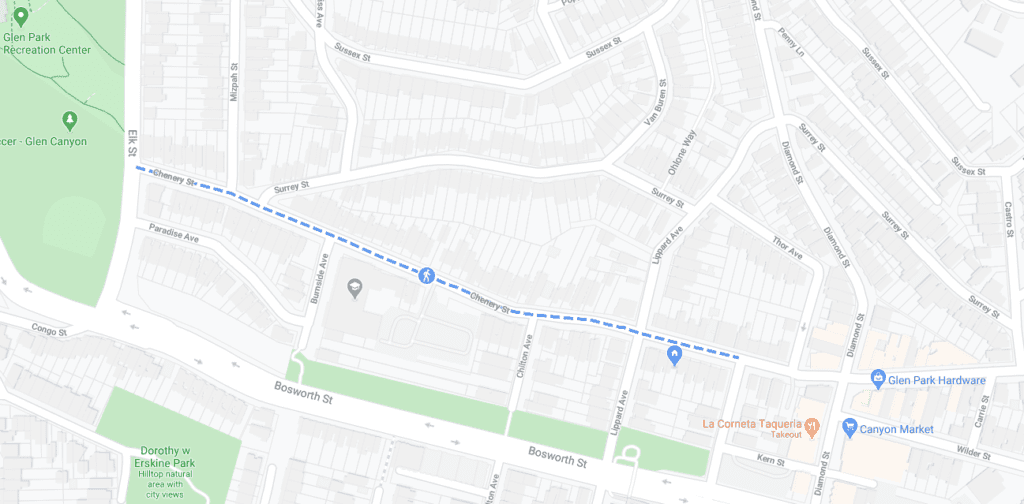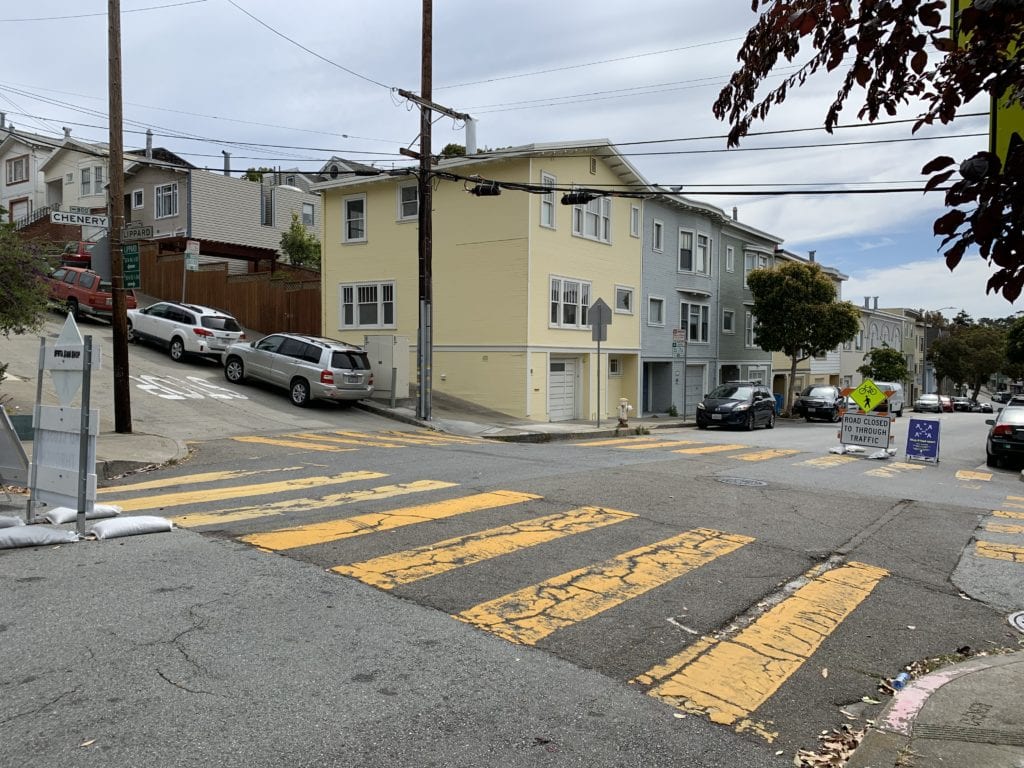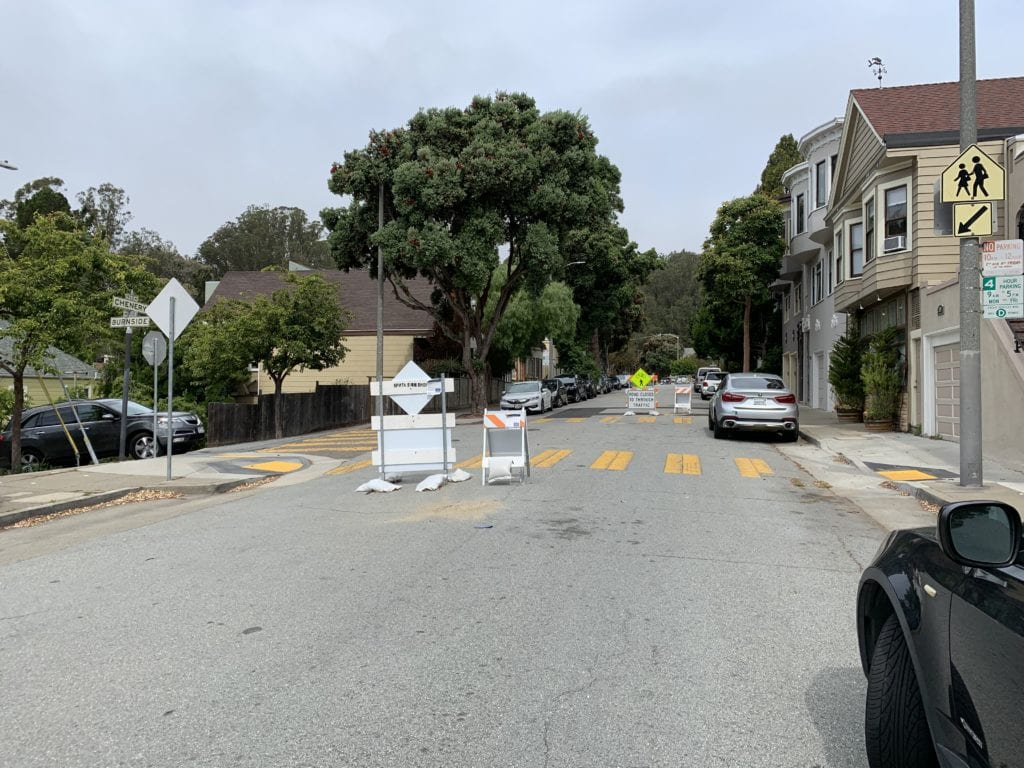
Fifteen swaths of street in San Francisco have so far been blocked off to create Slow Streets where people on foot and bicycles can more easily share the space. It’s part of the city’s response to the COVID-19 pandemic but life on the streets doesn’t always play out exactly as it’s depicted on the City’s website.
In Glen Park, the Municipal Transportation Agency originally destinated Chenery street as a Slow Street from Elk Street to Brompton. That would have meant four blocks of street closed to everything but people who live there and deliveries, with no through traffic allowed. It was to have stretched from Glen Canyon Park on the west to one block shy of the Village. That’s still what shows up on Google Maps.
Instead it’s about half that long. The barricades are only between Burnside and Lippard, two blocks shorter than initially planned.

Traffic patterns and the needs of emergency vehicles were the reason, city officials told the Glen Park News.
“The original segment was Elk to Brompton. This was pushed back to Lippard to allow for westbound through traffic to turn off on Lippard for better circulation. (Brompton and Lippard are each one-way in opposite directions),” Jacob Bintliff, a legislative aide to District 8 Supervisor Rafael Mandelman said in an email.
The move from Brompton to Lippard was a timely response to safety concerns raised by neighbors.
At the western end, the Slow Street barricade is at Burnside, one block west of Elk
“Our crews didn’t put a barricade at Elk/ Chenery because emergency vehicles need this particular space to make the turn from Elk onto Chenery,” said Erica Kato, chief spokesperson for the MTA.
Residents from throughout the neighborhood have been making great use of the newly opened space despite it only being two blocks long. It is filled with walkers, bikers and kids playing games. Suddenly San Francisco children are having the experience many who grew up in smaller towns and suburbs had as children, playing in the street with someone watching and yelling “Car!” when an automobile comes into view, so everyone can move to the sidewalks before retaking the street as soon as the car had passed.

It’s also become a haven for many parents teaching their kids to ride bikes, with wobbly-legged youngsters wending their way up and down Chenery with loud calls of “Watch me!” Something they previously might only have accomplished during a week at Camp Mather, which is of course closed this year due to the pandemic.
The City says the blocked-off streets are a temporary response to the COVID-19 health crisis, with so many residents needing to walk and use other modes of transportation to make essential trips. “However, sometimes it is difficult to maintain 6’ of social distance on many sidewalks, park paths, and bikeways. Because of this, many pedestrians are choosing to walk in the street, exposing themselves to swiftly moving vehicle traffic,” according to SFMTA’s website.
But on the ground, it appears to be much more about creating space for people to play basketball, hop on a scooter or pedal a play car than something being used as a commute strategy. The question will be whether the space can remain once schools start again in the fall, especially with St. John the Evangelist school drop off on Chenery and Glen Park Elementary a block away.
The MTA has also reviewed from Roanoke to Randall in Glen Park and this segment is being considered for a future phase of Slow Streets. In addition, the city is considering a Bike Share Station on Arlington west of Roanoke Street.